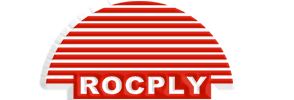Plywood thickness fundamentals for real projects
Plywood thickness is more than a line on a spec. It sets stiffness, screw hold, and edge life. It also shifts handling weight and cutting effort. A smart choice saves time and money across the build.
Nominal and actual values can differ. Tools and coatings need that detail. We label both figures on each pack. Your team then picks with confidence.
Local habits matter as well. Some regions speak in inches. Others use exact millimetres. ROCPLY shows both, so yard checks stay quick.
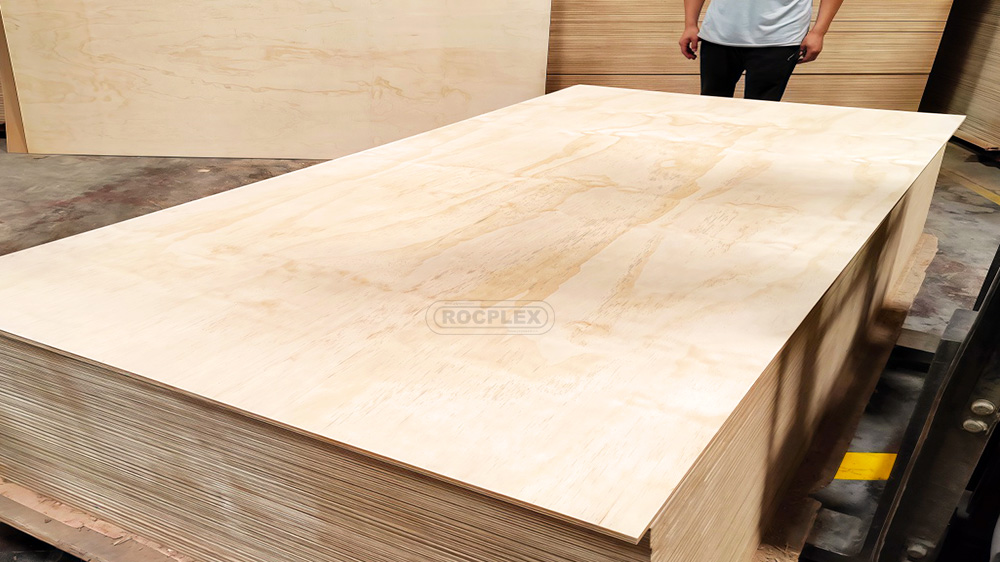
Plywood thickness ranges and common formats
Work usually falls within a practical band. Thin skins suit light linings and curves. Mid tiers support cabinets and fit-outs. Heavy boards carry floors, tops, and longer spans.
The 4×8 plywood format still anchors trade. It ships well and reduces off-cuts. Metric sheets like 1220×2440 mm fit export lanes. Some regions favour 1250×2500 mm. We stock both lines to keep jobs moving.
Your layout drives the final call. Long rips can reward thicker sheets. Tight bends may favour thinner cores. Our advisors match sizes to the plan.
Plywood thickness chart principles you can trust
A plywood thickness chart is a guide, not a rigid law. Loads, spans, and fixings adjust the outcome. Real site data must shape the final step.
A useful chart is clear and simple. It lists glue class and use zones. It flags notes for paint or clear coats. Teams select fast when labels speak plain.
Designers also value quick red lines. We show where spans need supports. We mark where edge banding extends life. These cues reduce rework on day one.
Plywood thickness quick guide
| Thickness class | Typical uses | Span / notes | Glue advice |
| 3–6 mm | Light linings, curved skins | Tight bends; low load | MR interior; seal edges |
| 9–12 mm | Cabinet backs, wall panels | Short spans; light fixings | MR interior; E0/E1 option |
| 15–18 mm | Cabinets, shelves, fixtures | Medium spans; better grip | MR or WBP by zone |
| 21–25 mm | Floors, tops, risers | Longer spans; high loads | WBP phenolic; edge seal |
| 28–30 mm | Heavy benches, stages | High impact; minimal bounce | WBP phenolic; robust coat |
Plywood thickness and structural thinking
Stiffness rises with thickness and species density. Dense cores carry more load at a given span. Screw hold also improves with depth. Shelves and floors feel solid under real use.
Non-structural jobs need different rules. Wall linings prefer lighter boards. Cabinets split the difference by part. Doors and backs often sit in the mid band.
Always check local rules for structural use. Ratings, spans, and fasteners may be defined. Our team provides data where codes allow.
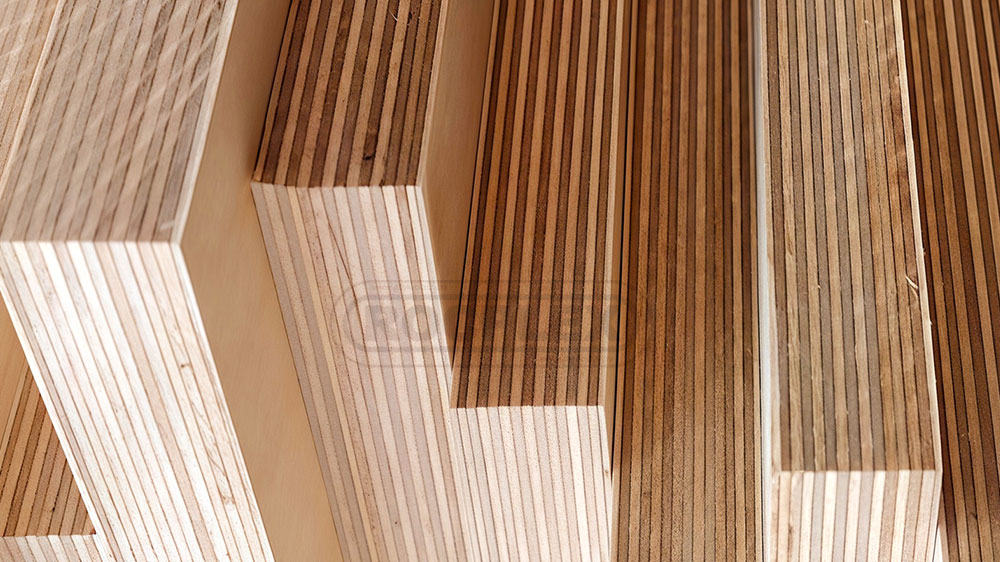
Plywood sizes, weight, and handling
Weight matters on busy sites. Light cores reduce strain and lift time. Heavier boards reward long spans and dense fixings. Plan lifts and storage with those facts.
Pack design affects safety and speed. We align pack heights to your racks. Labels face the aisle for quick scans. Barcodes link to batch data and counts.
Crews notice small touches. Fork points mark safe lift zones. Edge guards protect corners on tight turns. These details cut damage and delays.
Plywood thickness selection by application
Cabinet carcasses favour mid-range boards. Doors need clean faces and stable cores. Shelves may step up to control sag. Backs can step down to save weight and cost.
Retail fixtures demand durability. Edges see frequent contact and moves. A thicker board with banding lasts longer. Stores then spend less on repairs.
Floors and benchtops carry heavy loads. Plan for screw hold and span. Thicker boards cut bounce and vibration. Users feel the difference at once.
Face, core, and finish links
Face grade sets the finish path. Smooth faces reduce primer time. Clean grain supports clear coats and stains. Utility faces cut cost in unseen areas.
Core species move stiffness and weight. Poplar lowers mass and cuts smoothly. Eucalyptus boosts strength and grip. Mixed cores balance price and performance.
Finishes also shape life. Edge banding protects against chips. Good primers lock fibres for paint. Clear coats show veneer character with depth.
Plywood thickness, glue systems, and moisture
Room conditions drive glue choice. MR suits dry interiors and cabinet parts. WBP phenolic plywood supports wet zones and harsh use. Matching glue to risk protects warranties.
Edges need care in damp rooms. Seal cuts and band exposed edges. Vent concealed spaces to release humidity. These steps keep boards stable.
ROCPLY documents glue class by batch. Certificates travel with each shipment. Files pass reviews without delay.
Fasteners and cutting practice
Fastener depth should match load and substrate. Dense cores reward pre-drilling near edges. Heads must sit flush, not crushed. Correct spacing protects structure and look.
Cutting tools need attention. Sharp blades reduce tear-out and scorch. Dust control improves finish quality. Crews deliver clean edges with less sanding.
Small decisions save minutes. Those minutes compound into margin. Over time, margin builds real profit.
Board tolerances and actual values
Nominal sizes help in daily talk. Actual values drive the job. We hold tight internal tolerances. Edges stay square and true.
Labels show both figures clearly. Teams avoid mismatched parts and fit issues. Returns fall when data stays visible.
We also track moisture at pack. Stable inputs lead to stable outcomes. Finish teams value that predictability.
Plywood thickness and waste reduction
Right sizes cut off-cuts. Smart layouts reduce short strips and triangles. Custom rip programs go further. Plants then save hours each week.
A plywood sheet that fits the plan avoids extra handling. Workers move with confidence and pace. Clean workflows show in the schedule.
Waste costs more than material. It slows lines and lowers morale. Prevention beats correction every time.
Span planning for shelves and floors
Span tables translate thickness into limits. Designers use them to prevent sag. Heavy loads call for thicker boards or supports. Light loads allow slimmer choices.
Shelves give a clear example. Long runs with books sag quickly. A small step up in depth fixes it. Customers notice the improvement.
Floors tell the same story. Bounce and creak reduce with the right board. A room feels stable and quiet.
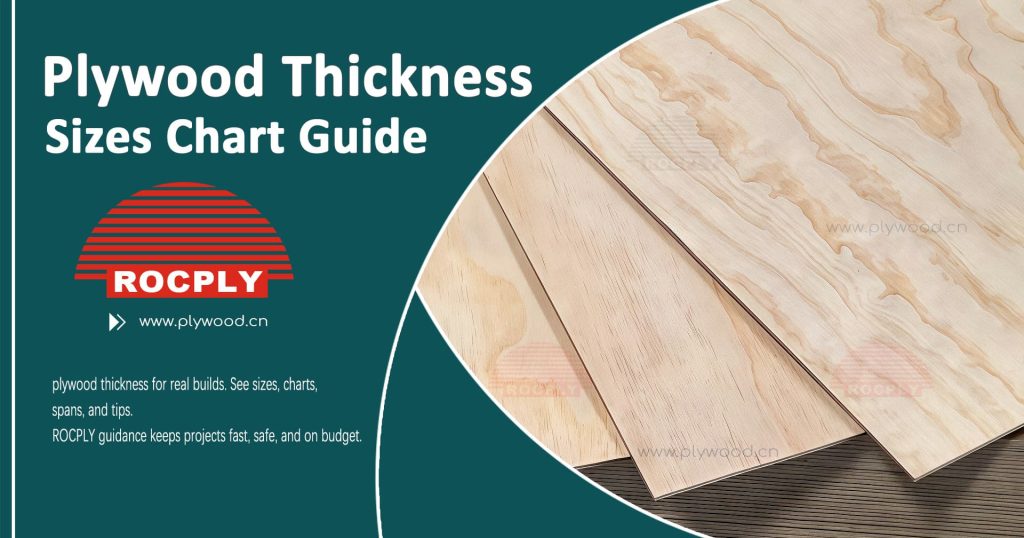
Plywood thickness and code notes
Codes differ by region and use. Some systems define rated panels. Others set span and fixing rules only. Confirm which model governs your job.
Where codes require proof, we help. Our team prepares test notes and file sets. Submittals move without last-minute edits. Projects stay on schedule.
Clear labels support compliance. Inspectors read the pack and move on. Jobs pass checks with less noise.
4×8 advantages and metric options
The 4×8 plywood format powers freight density. Square stacks load fast and safe. Yards process them with fewer touches. Stores display clean blocks and signs.
Cuts often align to 4×8 planning. Waste falls, and jobs move quicker. Installers appreciate repeatable measures.
Metric blocks matter as well. Export lanes rely on 1220×2440 mm plywood. Some builds prefer 1250×2500 mm. We supply both formats on steady lanes.
Plywood thickness and pricing logic
Cost follows inputs and risk. Species, face grade, and glue class matter. Emissions class can add a small step. Freight lanes also move the needle.
Clear quotes help teams plan. We show packing and document adds. Buyers compare like for like. Decisions speed up across the board.
A fair number beats a low mystery. Partners return when reality matches paperwork. ROCPLY keeps numbers open and steady.
Plywood thickness FAQs for quick answers
How do I choose the right depth?
Match load, span, and finish. Consider glue class and room risk. Ask our team for examples.
Do nominal and actual values differ?
Yes. Actual numbers can vary by build. Check labels before cutting or coating.
Can thin skins carry shelves?
Usually no. Shelves prefer deeper boards. Add support or step up in depth.
Will heavier boards always win?
Not always. They add weight and cost. Use only what the job needs.
How does finish affect the choice?
Paint forgives more than clear coats. Smooth faces cut primer time and sanding.
Can I reduce waste with custom cuts?
Yes. Rips and crosscuts tailor inputs. Plants save hours each month.
Is 18mm plywood equal to three-quarter?
It sits slightly thinner than 3/4 inch. Many jobs still accept it. Confirm tolerance in your spec.
Where do charts fit into design?
Charts guide the first pass. Site loads refine the last choice. Use both to stay safe.
ROCPLY portfolio by thickness range
We cover the full thickness range. Thin sheets support skins and curved parts. Mid tiers drive cabinet, fixture, and retail work. Heavy boards handle floors, tops, and spans.
ROCPLY controls veneer selection and layup. Glue lines follow audited routines. Press cycles track temperature and pressure. The result is predictable performance and clean finishing.
Labels carry nominal and actual values. You can pick to the exact need. Inventory stays clear across yards and stores.
Labels, documents, and clean handovers
Documents move with the load. Invoices, lists, and certificates arrive together. Emissions sheets and glue notes sit on file. Brokers clear shipments without delay.
Mixed containers support small markets. Premium faces ride beside utility boards. You hit service levels without heavy stock. Turns improve as lines match demand.
After-sales closes the loop. We trace issues quickly with batch data. Root causes turn into better runs. Partners see fewer repeats over time.
Plywood thickness and training tools
Teams need clear, short guides. One page links sizes to jobs. Another page maps spans and loads. Short scripts cover retail questions.
Sample kits help stores. Face grades sit side by side. Cores show weight and grip. Shoppers feel the difference in seconds.
Fabricators want deeper data. We share bond notes and process details. Submittal packs arrive review-ready. Projects stay on schedule.
Plywood thickness and safety points
Lift with the right team and tools. Use gloves and eye protection during cuts. Keep blades sharp for clean edges. Store packs flat on dry, level supports.
Avoid long sun exposure before install. Seal cut edges in wet zones. Vent hidden spaces near moisture sources. These habits protect finish and schedule.
Safety saves time and cost. It also protects brand trust. Crews remember who made their work easier.
Plywood thickness and the ROCPLY difference
Quality shows in the cut edge. Cores stay tight and consistent. Faces sand clean and finish well. Thickness lands within narrow windows.
Service makes buying simple. Quotes stay clear and complete. Files arrive on time. Loads ship on the confirmed window.
Our approach reduces friction. Teams move without drama. Clients notice both the finish and the fit.
Logistics and packing overview
| Item | Specification |
| Pallet pack count (by thickness) | 3–6 mm: 80–100; 9–12 mm: 50–70; 15–18 mm: 40–50; 21–25 mm: 30–40 |
| Wrapping | Tear‑resistant film with edge guards |
| Straps | High‑tensile PET or steel as required |
| Labels | Barcode, batch, grade, thickness; aisle‑facing |
| Moisture control | Target drying plus desiccant on request |
| Forklift handling | Marked lift points and clearances |
Get plywood thickness guidance and a quote
Plan with data, not guesses. Share loads, spans, and finish goals. We align sizes, glue classes, and faces. Then we lock schedules and file needs. ROCPLY plywood thickness guidance turns choices into steady outcomes.
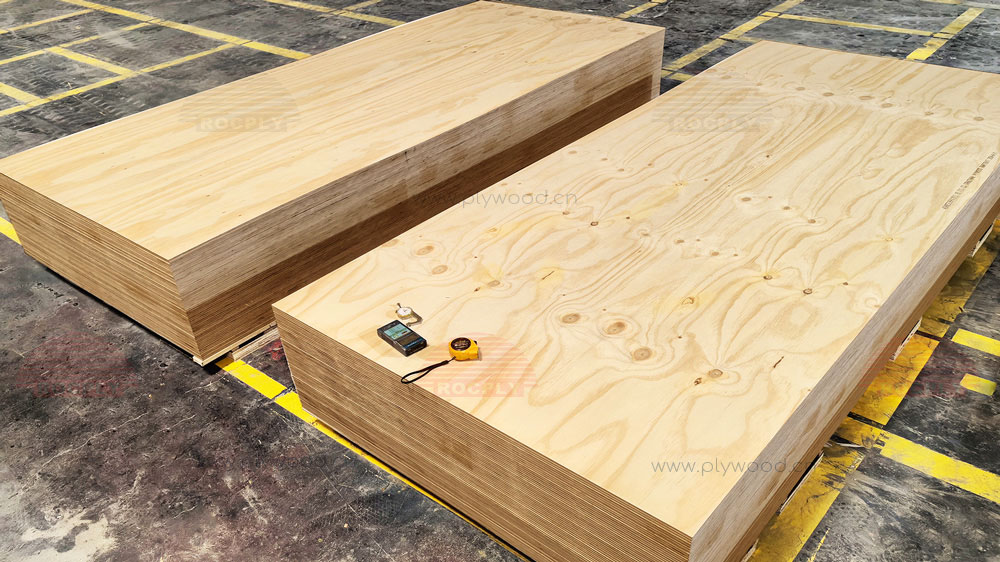
Plywood
ROCPLY, a trusted name in the construction materials market, is proud to announce the launch of their new line of high-quality ply wood solutions. Designed to meet the diverse needs of the industry, ROCPLY now offers an extensive range of ply options, including structural, birch, marine, and MR plywood.
ROCPLY Plywood Superior Quality and Durability:
ROCPLY ply solutions are meticulously crafted to deliver superior quality and durability. The structural ply offers exceptional strength and stability, making it ideal for applications that require reliable load-bearing capabilities. Birch ply wood, known for its fine grain and consistent thickness, provides versatility and aesthetic appeal. The marine ply wood is specially treated to withstand moisture and weather conditions, making it perfect for marine and outdoor projects. Lastly, the MR ply wood offers moisture resistance, making it suitable for interior applications where protection against humidity is essential.
ROCPLY Plywood Wide Range of Applications:
ROCPLY ply wood products cater to various industries and applications. The structural ply is widely used in commercial and residential construction projects, including flooring, roofing, and formwork. Birch plywood is sought after by architects and designers for its versatility in furniture making, cabinetry, and interior fittings. Marine plywood is a top choice for boat building, docks, and other water-related structures due to its water-resistant properties. MR plywood finds applications in indoor furniture, cabinets, and decorative purposes, offering both functionality and style.
ROCPLY Plywood Commitment to Quality and Sustainability:
ROCPLY is committed to delivering ply wood solutions that not only meet high-quality standards but also adhere to sustainable practices. Their ply is sourced from responsibly managed forests, ensuring a minimal impact on the environment. With ROCPLY’s plywood options, builders and architects can confidently create sustainable and eco-friendly structures without compromising on performance.
We are thrilled to introduce our new line of ply wood solutions. At ROCPLY, we strive to provide our customers with the finest quality materials that meet their specific requirements. With our range of structural, birch, marine, and MR plywood, we aim to empower builders, architects, and craftsmen to bring their visions to life.
For more information about ROCPLY’s plywood solutions and to request samples, please visit [website] or contact [contact details].
About ROCPLY Plywood:
ROCPLY is a leading brand in the construction materials industry, known for delivering high-quality products to wholesalers, builders, and contractors. With a commitment to innovation, sustainability, and customer satisfaction, ROCPLY offers a wide range of construction timber material.
Post time: Nov-10-2025
